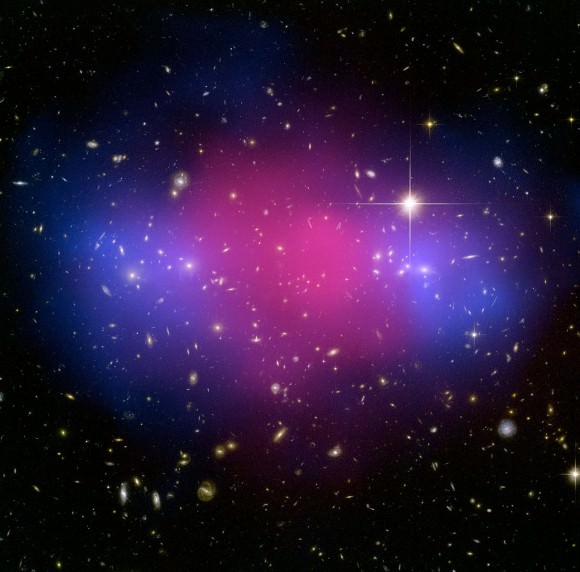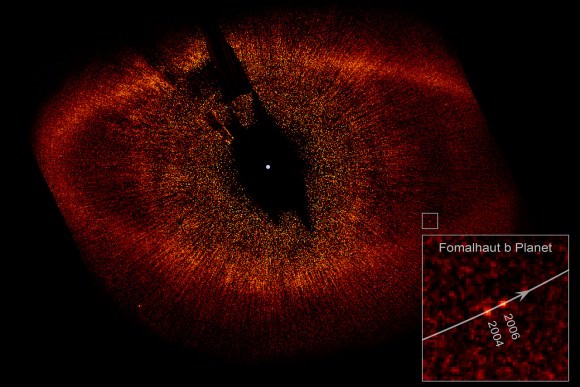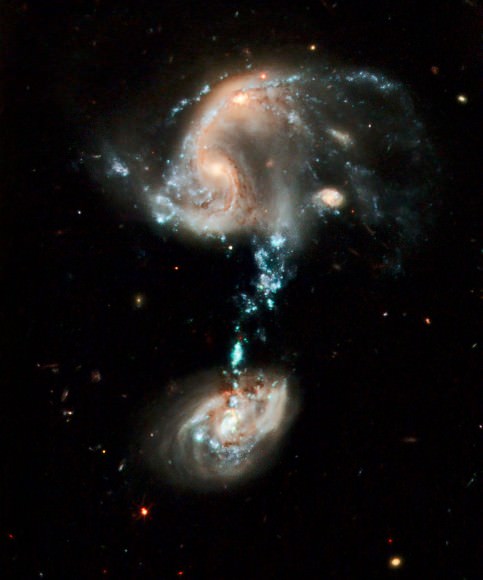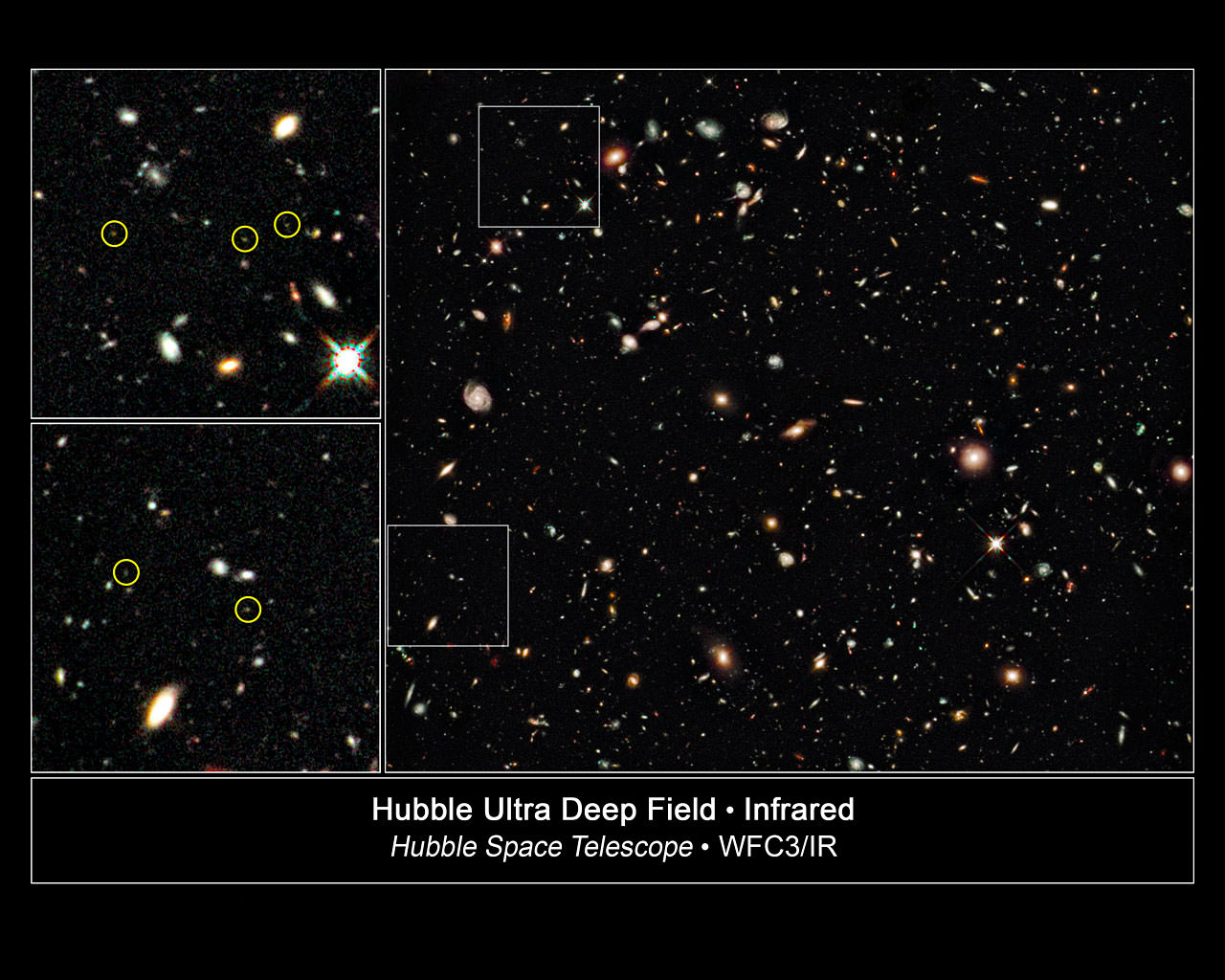Note: To celebrate the 20th anniversary of the Hubble Space Telescope, for ten days, Universe Today has featured highlights from two year slices of the life of the Hubble, focusing on its achievements as an astronomical observatory. Today’s article looks at the last two years, to April 2010.
The stakes for the fifth, and final, Hubble servicing mission couldn’t have been higher; not only were two new instruments to be installed (a relatively straight-forward task), not only was much of key infrastructure to be replaced (batteries, fine-guidance sensors, thermal blankets), but intricate repairs had to be performed on the two most complicated instruments (ACS and STIS), something not in the design, something difficult enough in a well-appointed lab on Earth much less done by astronauts in bulky space suits. The servicing mission was postponed, as it became clear that the work to be done was more extensive; but in May 2009 STS-125, involving five full days of space walks and 11 days in space, met all the objectives.
And a little under four months later, after extensive testing and calibration, the Hubble was back in the astronomy business.
This image is the Hubble Ultra-Deep Field (HUDF), as seen by WFC3 in the infrared (now that Hubble Zoo is live, you will have a chance to analyze fields like this yourself!)
[/caption]

MACS J0025.4-1222 is not as well known as the Bullet Cluster, but perhaps it should be. One of the really big, open questions in astronomy today is the nature of dark matter; observations of the Bullet Cluster point to dark matter being a form of matter that does not interact with normal (baryonic) matter, except gravitationally. But perhaps the Bullet Cluster is just an anomaly, or perhaps we don’t really understand what’s going on? In astronomy, as in all science, independent verification is key, and what better way to provide that, for dark matter, than to observe another interacting cluster? “Revealing the Properties of Dark Matter in the Merging Cluster MACS J0025.4-1222” is the paper to read, and Hubble’s ACS provided many of the key observations.

A direct image of an exoplanet, and an estimate of its orbit; the coronagraph on ACS blocked out most of the light of Fomalhaut so its planet – Fomalhaut b – could be seen.

WFPC2 was removed during SM4 (and replaced by WFC3); this was Hubble’s workhorse camera for some 16 years, the camera which just kept on working. It is fitting then that one of its last images is of Arp 194, dubbed ‘the fountain of youth’.
Previous articles:
Hubble’s Late Teen Years: It Was the Best of Times, It Was the Worst of Times
Hubble Turns Sixteen, and Just Keeps on Working
Hubble Enters its Teen Years, More Powerful, More Ambitious
Hubble’s 20th: At Least as Good as Any Human Photographer
Hubble’s 10th Birthday Gift: Measurement of the Hubble Constant
Hubble at 8: So Many Discoveries, So Quickly
Hubble’s 20 Years: Now We Are Six
Hubble’s 20 Years: Time for 20/20 Vision
Hubble: It Was Twenty Years Ago Today
Sources: HubbleSite, European Homepage for the NASA/ESA Hubble Space Telescope, The SAO/NASA Astrophysics Data System


One story about Hubble’s anniversary is good enough. Why waste so much time on one issue, when there are so many interesting things happening. After all this is not television, where you keep rehashing the same news again and again.
I know the Hubble is inspiring – but really – I wish these would all just stop: they are annoying. One clever and insightful article would have been enough. Same goes for the endless Apollo articles!
Please don’t do this again. So many great discoveries as of late, and not a peep from UT on them!
Don’t do this. Condense to one article.
It’s definitely better than useless news about dead Spirit on Mars. :p
What new discoveries have happened?
You two have an autonomous mouse? If you don’t want to read an article, don’t click on it!
I for one enjoyed both the Hubble and Apollo anniversary series. Keep up the good work Nancy, Jean and all.
donjasjit, Uncle Fred,
If you think Universe Today has missed a good space or astronomy story, news, or discovery, please send me or Nancy an email; readers’ inputs are both helpful and interesting (you can also send any other comments too).
HeadAroundU, wjwbudro,
Thanks for your comments, and your feedback, I appreciate it.
@donjasjit & Uncle Fred: a little ungrateful hey? And so demanding too!
@ Jean Tate,
The link to “Click for a larger version” of the Hubble Ultra Deep Field image above does not work; this is the correct link:
http://www.spacetelescope.org/static/archives/images/large/heic1001a.jpg
I know this is an impossible question but, does anyone know if there is a Hubble Deep field type photograph that has many “less” galaxies and objects in the picture?
Sort of a photo of the least populated part of the sky? The truly rural part. I know they have found a part of the sky that seems to be a 350 million light year “void” of sorts, but I was wondering if Hubble has ever been tasked to photo something like that………….
IVAN3MAN_AT_LARGE,
Thanks; fixed.
rudeyd,
The various Hubble Deep Fields (original HDF, HDF-S, and HUDF) all had ‘representative of the universe’ as a key criterion (others included the absence of bright, Milky Way, stars, and at a location the HST could stare at for a million seconds or more, easily; these are relatively easy criteria to meet).
As voids are relatively common, and these images are ‘deep’, in any of them one or more voids will be seen. Here’s a very crude way to understand this:
* assume voids are randomly located,
* assume they are 100 Mpc across,
* assume they are 200 Mpc apart,
* assume in these deep fields galaxies up to 2 Gpc can be imaged.
From this you can estimate how likely it is for a random sight-line to go through at least half of one void; or how likely it is that any sightline will avoid all voids. The answer is, simply, that voids are unavoidable.
It is a catastrophe! I can’t sign up for Galaxy Zoo: Hubble. I think their registration is broken!
Ah. Thanks!
I think the whole Galaxy Zoo site is down, or under-resourced, or undergoing maintenance, or …
Let’s hope it is back up soon (perhaps early morning, UK time).
Thanks Ivan_3 for the info.
I understand all that, but I was referring to an actual location in space that was discovered not too long ago. (Maybe 5 years ago??)
Even though empty space is never really empty, this was an extremely large area that had very few Galactic objects at all – even after several very long exposures were taken of it. All scientists involved were surprised that it truly appeared to be a “hole” in the Universe.
I’m guessing from the response to my question that no one else has heard of a location in the sky deemed to be actually “empty”??………
I had the magazine article that named it, but unfortunately misplaced it when I moved……
I figured it would be easy to look up again – Obviously not.
Now that I think about it, the article I am referring to had to be closer to 10 years old because the HUDF image had not been taken yet……
So this area of space was discovered before the Ultra Deep Field or the Hubble Deep Field was taken.
It must not have been taken by Hubble or it would be easier to find, and maybe I would have seen more articles on it…. It is going to drive me nuts!
rudeyd,
I think it was the info I provided you are referring to …
Perhaps you are thinking of the WMAP cold spot in Eridanus (here is one report of this)? If so, then you may be interested to see what was subsequently discovered about it; for example my Universe Today story.